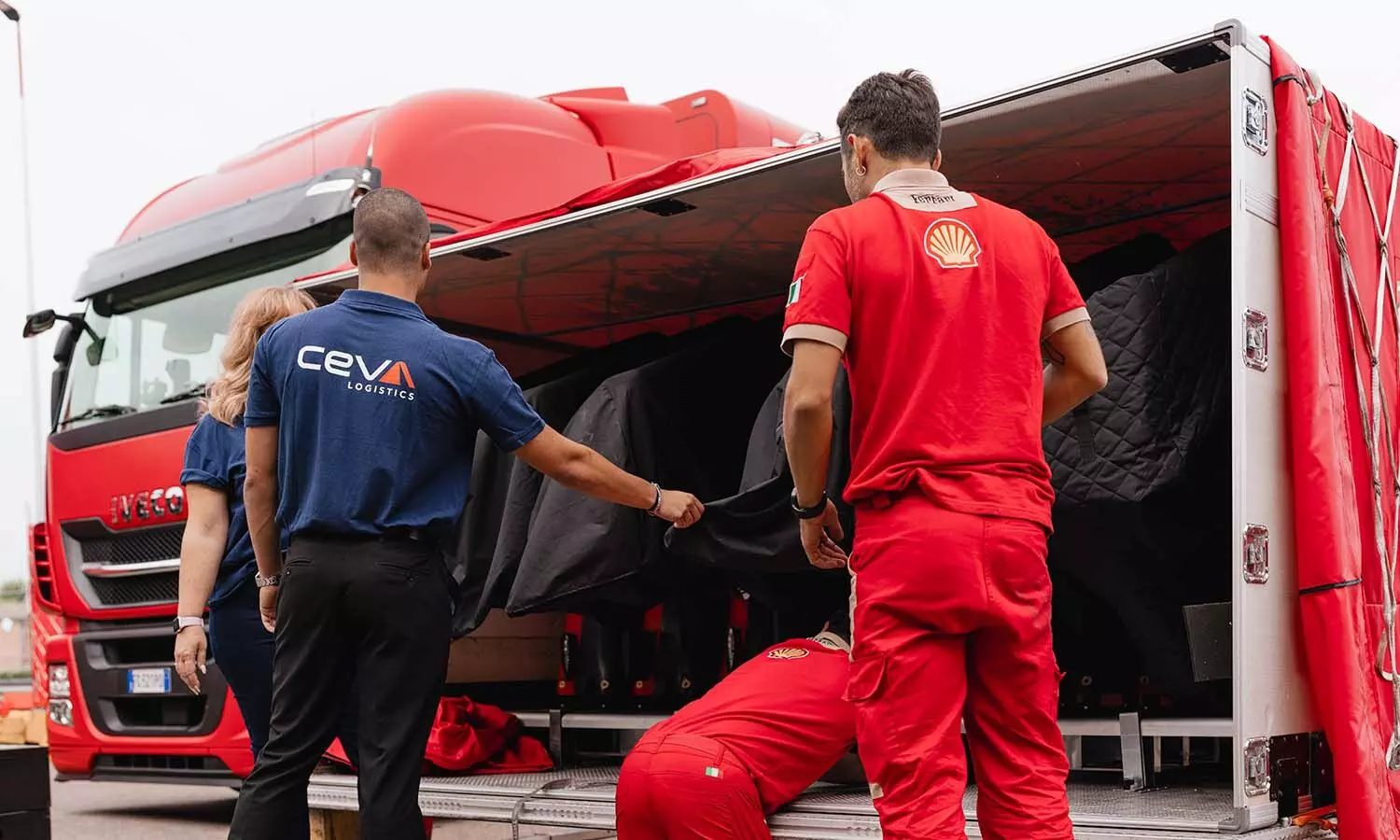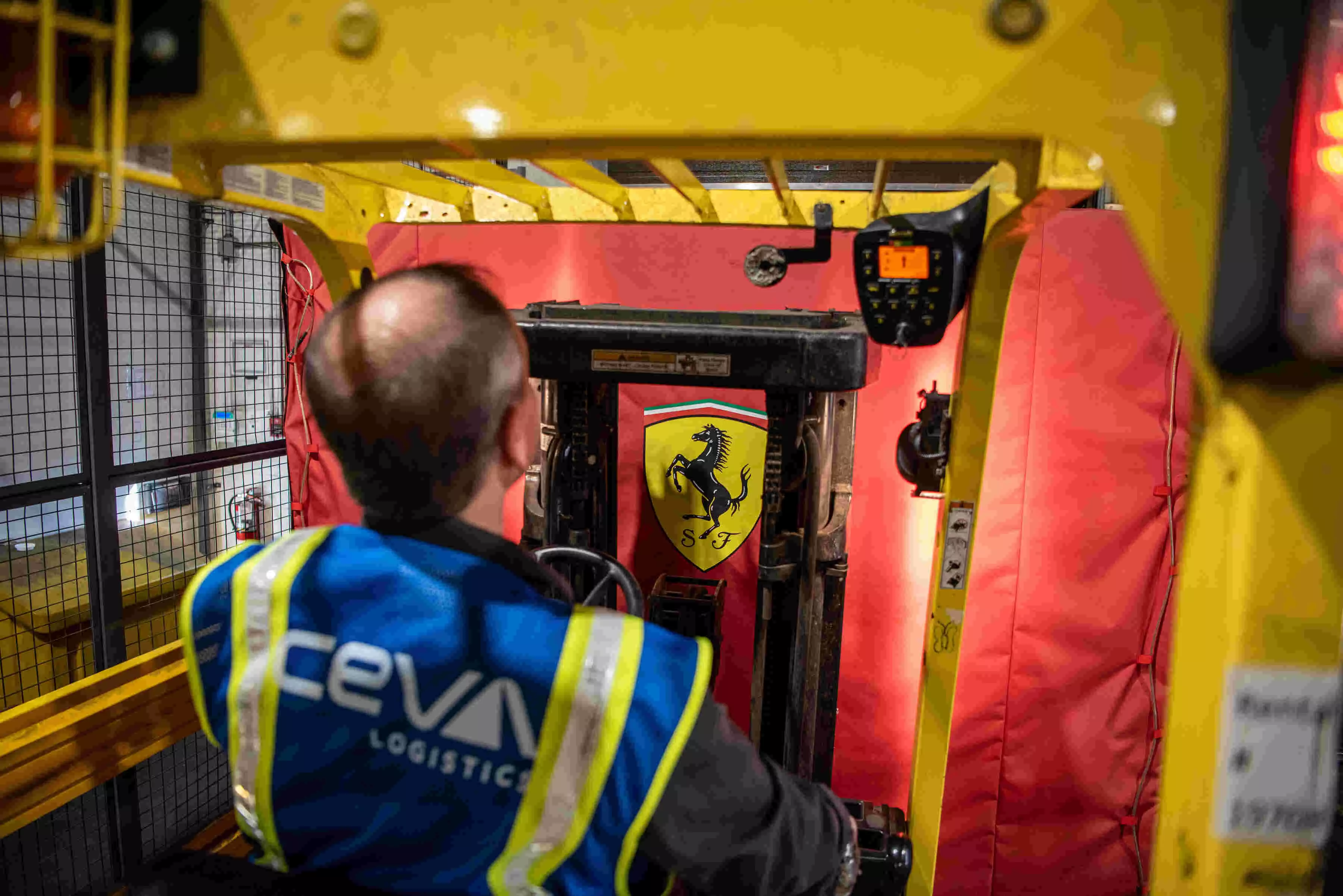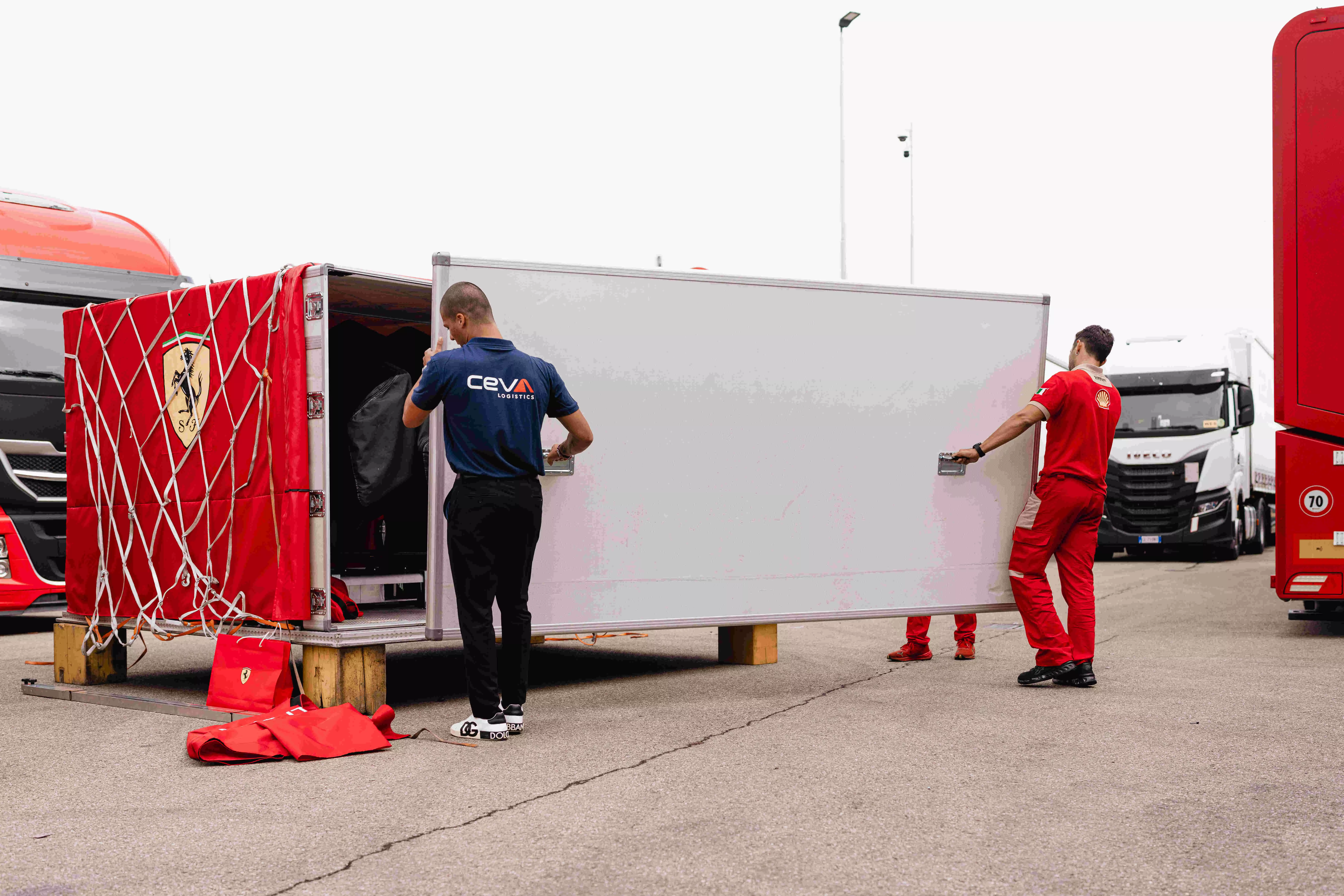
Driving precision: How CEVA Logistics powers Ferrari’s global F1 journey
CEVA powers Ferrari’s F1 journey with smart, multimodal logistics across 68 races in 52 countries, including rail.

In Formula One, engineering brilliance and track performance capture the spotlight, but they’re only half the battle. Behind every race weekend lies an intricate choreography of logistics, where timing, precision, and global coordination decide whether a team even makes it to the starting grid. For Scuderia Ferrari, one of the most storied names in motorsport, this off-track race is powered by CEVA Logistics.
Tasked with moving tonnes of race-critical equipment across five continents on a 24-race calendar, CEVA’s role is far more than transportation. It is a high-stakes operation where failure is not an option. An integrated suite of digital tools and predictive systems lies at the heart of one of the most complex logistics operations in professional sport.
Race-proven simulations
Preparation is fundamental in F1, and CEVA applies the same philosophy to logistics. Ahead of every season, CEVA and Ferrari run extensive simulation exercises, replicating real-world crisis scenarios—from grounded cargo aircraft and road closures to full-blown port strikes.
One defining moment came in 2023 during the catastrophic floods in northern Italy that led to the cancellation of the Imola Grand Prix. Although the race was called off, CEVA’s systems activated emergency protocols, securing Ferrari’s freight, protecting vital components, and redirecting equipment seamlessly to the next event. The lessons from that event now serve as case studies within CEVA’s crisis management playbook.
These exercises aren’t hypothetical—they’re deeply data-driven, often fed by historical disruptions, geopolitical risks, and supply chain analytics. It’s a level of preparation that mirrors the precision of Ferrari’s on-track strategy.

Inside CEVA’s warehouse, Ferrari’s precious cargo is carefully maneuvered for secure transport.
Tonnes in transit: The scale of the challenge
On any given race week, CEVA is responsible for transporting between 40 and 50 tonnes of Ferrari equipment. That includes race cars, spare parts, IT infrastructure, pit wall setups, garage flooring, fuel rigs, and even the team’s espresso machines. Multiply that across 24 races and more than 20 countries, and the total exceeds 1,200 tonnes per season.
Each move is built on a complex multimodal strategy. For European races, fleets of CEVA-branded trucks handle overland transport. For long-haul events, CEVA blends air and sea freight—sending bulky infrastructure by sea weeks in advance, and flying mission-critical parts in temperature-controlled containers.
And in back-to-back race scenarios, where the turnaround time is under four days, CEVA disassembles, flies, and rebuilds Ferrari’s paddock setup with just hours to spare. It’s a military-grade operation disguised in team colours.

CEVA and Ferrari staff load vital F1 gear for the next Grand Prix.
Crisis is just another curve: Emergency response on track
Formula One logistics are never immune to disruption, but CEVA treats chaos as a variable, not an exception. Take the 2023 Bahrain Grand Prix, where an emergency air shipment of high-voltage batteries was coordinated at the last minute. Or the Emilia-Romagna Grand Prix in Imola that same year, which was cancelled due to floods, prompting CEVA to quickly repatriate equipment back to Maranello before repositioning it for the next race.
“All kinds of emergencies and issues can arise,” the company said, citing port congestion before the 2024 Brazilian Grand Prix and a host of similar challenges. “These should be considered a normal and anticipated part of the operation.”
Thanks to CEVA’s global scale and strong local presence, these disruptions are managed with seamless agility.
Multimodal mastery: Ocean, road, air, and now rail
Between 2022 and 2024, CEVA Logistics managed the transportation of Ferrari’s racing infrastructure across 68 Grand Prix events, covering more than 480,000 kilometers and traversing 52 countries. Central to this operation were 18 standardized logistics kits, each made up of six containers weighing approximately 45 tonnes, responsible for carrying everything from telemetry systems and garage equipment to spare chassis and precision race tools.
The majority of this movement was executed via ocean freight, which accounted for around 80 percent of the total logistics footprint. Road transport made up about 15 percent of the journey, primarily for regional transfers within host countries and between nearby circuits. Meanwhile, air freight, though used sparingly at just 5 percent, played a critical role in moving high-priority or emergency components that couldn’t afford any delay.
In 2023, CEVA achieved a significant milestone by organizing a rail transfer for Ferrari’s F1 equipment between the races in Montreal, Austin, and Las Vegas—marking the first time such a mode had been used in both Scuderia Ferrari HP and Formula 1 history. “It was the first in Scuderia Ferrari HP and Formula 1 history,” CEVA said, a landmark that also signals Formula 1’s evolving commitment to more sustainable and efficient transport solutions.
The rail initiative wasn’t just about efficiency; it marked a conscious pivot toward reducing the carbon footprint of one of the world’s most travel-intensive sports. The North American rail leg in 2023 could become a blueprint for future efforts, especially as F1 targets net-zero emissions by 2030.

